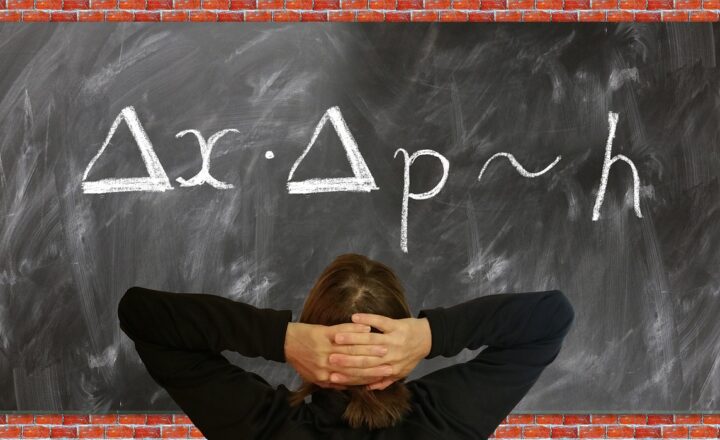
Quantum mechanics, a fundamental theory in physics, has revolutionized our understanding of the universe. Unlike classical physics, which describes matter as discrete particles and waves in a clear-cut manner, quantum mechanics introduces a more nuanced perspective where particles can exhibit wave-like properties and waves can reveal particle characteristics. This duality remains one of the most fascinating and perplexing aspects of quantum mechanics.
1. The Birth of Quantum Mechanics
In the early 20th century, scientists struggled with phenomena that classical mechanics couldn’t explain, such as blackbody radiation and the photoelectric effect. Max Planck introduced the concept of quantization in 1900, proposing that energy exists in discrete units called quanta. This groundbreaking idea laid the foundation for quantum theory, leading to the development of the first quantum mechanics formulations by physicists like Niels Bohr and Albert Einstein.
This new approach enabled scientists to explain experimental results that classical theories could not, paving the way for technological advancements in various fields, including electronics and chemistry.
2. Wave-Particle Duality: The Heart of Quantum Mechanics
The most intriguing aspect of quantum mechanics is the concept of wave-particle duality. It posits that every particle or quantum entity can be described as both a particle and a wave, depending on how it is observed. This notion began gaining traction through experiments:
- Double-Slit Experiment: When particles like electrons pass through two closely spaced slits, they create an interference pattern, characteristic of waves. However, if measured, they behave like particles. This experiment starkly showcases the fundamental principle of quantum mechanics—observation affects reality.
- Photon Behavior: Light, traditionally viewed as a wave, demonstrates particle properties through the photoelectric effect, wherein photons (light particles) knock electrons from a material’s surface. This behavior is especially pronounced at different light frequencies.
These experiments underscore that the underlying reality of physical entities isn’t simply one or the other; rather, their nature is intrinsically dual, a cornerstone of quantum mechanics.
3. Understanding Superposition and Entanglement
Two more significant concepts in quantum mechanics are superposition and entanglement.
- Superposition: Quantum objects can exist in multiple states at once. For instance, Schrödinger’s famous thought experiment illustrates a cat being simultaneously alive and dead until observed. This property allows quantum computers to process vast amounts of information in parallel, vastly outperforming classical computers for specific tasks.
- Entanglement: Particles can become entangled, meaning the state of one particle is directly related to the state of another, no matter how far apart they are. This connection implies instantaneous communication, challenging the notion of locality and suggesting a deeper interconnectedness in the universe. Einstein famously referred to this phenomenon as ‘spooky action at a distance.’
Experimentally tested strategies leveraging superposition and entanglement are crucial for developing quantum technologies like quantum cryptography and quantum computers.
4. The Implications of Quantum Mechanics
The revolutionary shifts in our understanding brought about by quantum mechanics have vast implications:
- Philosophical Insights: The probabilistic nature of quantum mechanics challenges our intuitions regarding determinism. What does it mean for reality if the outcome of an event is fundamentally random?
- Technological Advances: Technologies such as lasers, semiconductors, and MRI machines fundamentally rely on quantum mechanics principles. Insights from quantum mechanics have driven innovations in material science and nanotechnology. For example, advancements in translational medicine become feasible through understanding molecular interactions at a quantum level.
- New Paradigms in Physics: Quantum mechanics has also encouraged physicists to explore new models, such as quantum field theory and string theory, which seek a more unified understanding of the universe, connecting quantum mechanics with gravitational theories in new and exciting ways.
As choice and randomness force us to rethink our understanding of reality, quantum mechanics reshapes the philosophy of science by calling into question our perception of causality and the fabric of existence itself.
5. Quantum Mechanics and Future Technologies
The practical applications of quantum mechanics are set to revolutionize various fields:
- Quantum Computing: By leveraging superposition, quantum computers perform complex calculations exponentially faster than classical computers, impacting cryptography, material science, and optimization problems significantly.
- Quantum Cryptography: Offers unparalleled security through quantum key distribution, ensuring that any attempt at interception is immediately evident, promoting secure communication in an era of increasing cyber threats.
- Quantum Sensors: Highly sensitive devices capable of measuring gravitational waves, magnetic fields, and time with unprecedented accuracy. These sensors can potentially lead to breakthroughs in medical imaging and geophysical exploration.
Innovations inspired by quantum mechanics herald the dawn of a technological revolution that could redefine not just our working and living experiences but also our very conception of the laws governing the universe.
Conclusion: A New Era of Understanding
Quantum mechanics offers a comprehensive framework that challenges and expands our understanding of particles and waves, establishing a rich tapestry of interconnectedness in our universe. The journey into this complex interplay requires an open mind willing to embrace the ambiguity and intricacy of the quantum world. As scientists continue to explore the enigmatic layers of reality unveiled by quantum mechanics, our appreciation for the universe’s underlying structure grows deeper.
While many questions remain, what is clear is that the conception of reality will never again be viewed through the simple lens of particle versus wave. Instead, we recognize the depth and complexity within, driving the journey of inquiry forward into a quantum future.







